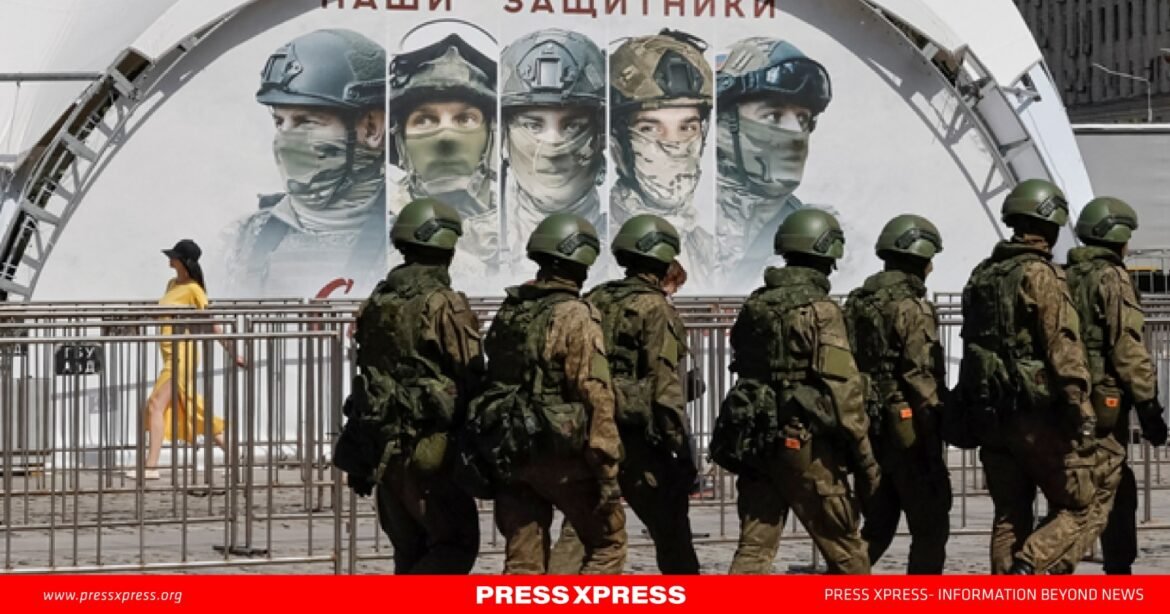Key Highlights
- Russia to grow its military to 1.5 million troops amid Ukraine conflict
- 41% of Russia’s budget will go to defense spending for troop increase.
- Russia offers bonuses up to $22,000 for new military recruits.
- Russia reportedly enlisting pre-trial detainees to bolster troop numbers
Amidst the US-led NATO future threat to Russia and Ukraine’s harsh fight with Western military aid,
Russian President Vladimir Putin has issued a directive to expand the country’s active military force to 1.5 million personnel to rebuild further strength. The ground reality for Russia is that they face heavy casualties in key battlegrounds such as Bakhmut and Kharkiv have further depleted Russia’s regular forces, requiring a constant flow of replacements.
The Russian President’s order, outlined in a decree on the Kremlin’s website, is the third major increase in troop numbers since the start of Russia’s military offensive in Ukraine in early 2022. Upon this step, Russia’s military to grow the second largest in the world, following China.
While this expansion may strengthen Russia’s position, questions remain about the long-term feasibility of maintaining such a large force, particularly as the conflict in Ukraine continues with no clear end in sight.
The Strategy Behind the Expansion
The decision to boost the size of Russia’s armed forces comes at a critical time in the war, as Russian forces are engaged in a grinding battle along a vast 1,000-kilometre front in eastern Ukraine prompting the need for additional troops to maintain its military presence and push forward on multiple fronts.
In addition to the 180,000 new recruits, elite units such as the airborne forces and marine infantry have been receiving enhanced training and equipment to improve their effectiveness in offensive operations. These units are critical to Russia’s military strategy, especially in light of Ukraine’s counteroffensives, which have targeted Russian-controlled areas with increasing intensity.
Financial Burden and Sustainability
The expansion comes with a heavy financial cost, as Russia’s defense budget absorbs a significant portion of government spending. According to the country’s 2025-2027 budget proposal, 41% of national expenditures will go toward defense and security, reflecting the long-term impact of the war. The Kremlin has also introduced substantial financial incentives to attract new recruits. Offers of up to $22,000 in signing bonuses for soldiers, alongside additional compensation for injuries or fatalities, underscore the effort to maintain manpower in the face of mounting losses.
However, Dara Massicot, a military analyst at the Carnegie Endowment for International Peace, has raised concerns about the affordability of maintaining a standing force of 1.5 million troops while also investing in modern equipment and technology.
“The question is whether Russia is prepared to foot the bill for such an expansion,” she wrote, noting that the reliance on volunteers may not be sufficient to meet the Kremlin’s manpower goals.
Recruitment Challenges and New Tactics
On the way of recruiting, the Russian Defense Ministry has turned to unconventional sources, including pre-trial detainees, to bolster its ranks. An investigative report revealed that efforts are underway to recruit up to 20,000 individuals from detention centers, a move that highlights the Kremlin’s struggle to maintain recruitment levels without resorting to another large-scale mobilization. Very clearly, it continues to recruit at a rate of about 1,000 new soldiers a day, but experts suggest that even this rate may be insufficient to sustain its current level of operations.
A Calculated Gamble?
Putin’s decision to expand Russia’s military to 1.5 million troops reflects the Kremlin’s determination to continue the war in Ukraine, despite the economic and military challenges it faces. While the increase may provide Russia with a numerical advantage, sustaining such a large force will require significant financial resources and a steady supply of recruits—both of which could prove difficult over time.
With the increase, Russia aims to outnumber other military powers such as the United States and India in terms of active combat soldiers. However, military experts have pointed out that a larger force does not necessarily translate into battlefield success.
Moscow’s earlier recruitment drives were plagued by poor training and insufficient equipment, resulting in a higher casualty rate and limited strategic gains. Hereafter, the world will be closely watching how this decision impacts the dynamics of the war zone.


